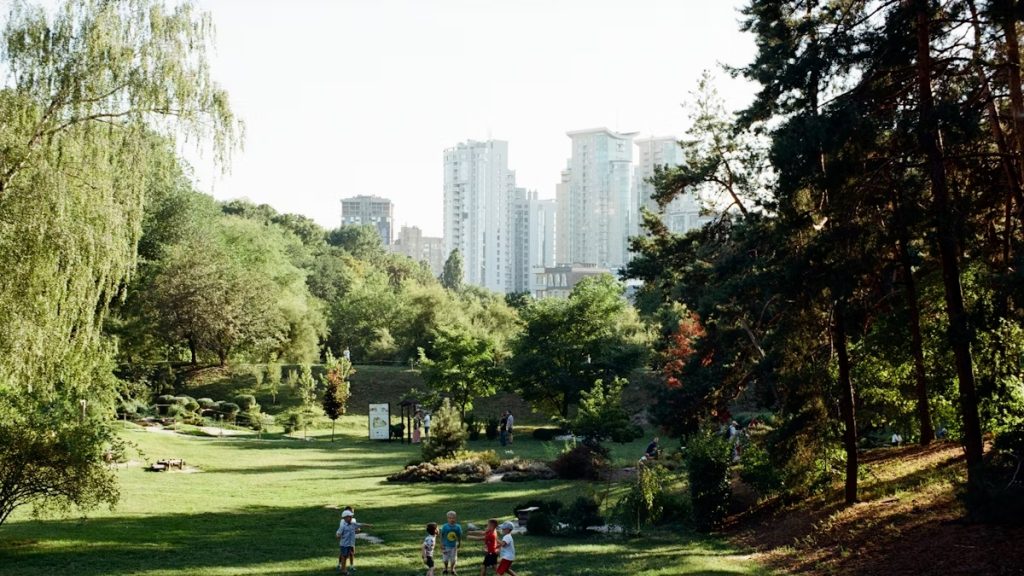The Vital Role of Urban Forests in Promoting Biodiversity and Well-being in Cities 2024

The Vital Role of Urban Forests
Urban woodlands, also known as city forests or metropolitan forests, are essential components of urban environments. These green spaces play a pivotal role in promoting biodiversity and enhancing the well-being of city dwellers. By providing habitats for wildlife and offering peaceful retreats for people, urban forests positively impact the ecological balance and contribute to the overall health of urban communities. The presence of these natural havens within cities not only supports diverse flora and fauna but also fosters a sense of connection to nature, which is vital for human well-being.
Biodiversity Conservation
Urban forests play a crucial role in preserving and promoting biodiversity within cities, contributing to the ecological balance and supporting a variety of species.
Supporting Wildlife Habitats
- Urban forests serve as vital habitats for diverse wildlife, creating sanctuaries within the city landscape that are essential for the survival of various species. These green spaces provide shelter, nesting sites, and food sources for a wide array of animals, thereby supporting urban biodiversity.
Attracting Fauna
- The presence of urban forests attracts a rich diversity of fauna, including birds, insects, and small mammals. These natural havens within the city boundaries contribute significantly to the overall biodiversity by providing refuge and sustenance for numerous species. As a result, urban forests play a critical role in maintaining the city's ecological diversity.
By offering essential habitats and attracting diverse wildlife, urban forests actively contribute to the conservation of various species while enriching the urban living experience.
Urban Well-being
Urban well-being through trees is a critical aspect of city living, with urban forests playing a vital role in enhancing the overall health and wellness of urban residents. These green spaces contribute to stress reduction and improved air quality, thereby positively impacting the well-being of individuals within metropolitan areas.
Stress Reduction
- The presence of urban forests provides essential green spaces for relaxation and recreation, offering city dwellers a natural escape from the hustle and bustle of urban life. Access to these tranquil environments enables people to unwind, reduce stress levels, and rejuvenate their mental well-being amidst the urban landscape.
Air Quality Improvement
- Urban forests significantly contribute to improved air quality by acting as natural filters, absorbing pollutants and releasing oxygen. This enhancement in air quality directly benefits the respiratory health of urban residents, reducing the risk of respiratory illnesses and promoting overall well-being.
By providing spaces for stress reduction and improving air quality, urban forests play a pivotal role in promoting metropolitan well-being via trees.
Tree-Centric Living
In urban areas, embracing a tree-centric living approach is crucial for fostering a harmonious coexistence between city dwellers and the natural environment. By actively engaging in tree-planting initiatives and advocating for sustainable practices, individuals can contribute to the development of vibrant and green urban spaces.
Community Engagement
- Participating in tree-planting initiatives and community programs is essential for cultivating a tree-centric living environment within urban areas. These activities not only enhance the green infrastructure of cities but also promote a sense of ownership and responsibility among residents towards their arboreal surroundings. By coming together to plant and care for trees, communities can create a shared commitment to preserving urban forests and promoting biodiversity.
Environmental Advocacy
- Advocating for the preservation and expansion of urban forests is fundamental to fostering sustainable and green urban environments. Embracing tree-centric living practices involves raising awareness about the importance of urban woodlands, influencing policy decisions that support green spaces, and promoting environmentally conscious behaviors. Through environmental advocacy, individuals can actively contribute to the creation of healthier and more resilient cities that prioritize forest-centered living.
By actively engaging in community programs and advocating for sustainable practices, individuals can play an integral role in nurturing tree-centric living environments within urban areas.
Global Examples
Singapore's Urban Forest Initiatives
Singapore stands as a compelling model for the successful implementation of urban forest initiatives, showcasing the dual benefits of urban forests in promoting biodiversity and enhancing well-being within cities. The city-state has strategically integrated green spaces into its urban landscape, demonstrating the positive impact of urban forests on ecological diversity preservation and community health.
Singapore's Approach: Through meticulous planning and innovative design, Singapore has incorporated lush greenery and diverse flora within its urban environment, creating a harmonious coexistence between nature and city living. This approach has not only preserved wildlife variety but also provided residents with rejuvenating natural retreats amidst the bustling cityscape.
European Urban Green Spaces
Across various European cities, innovative urban green spaces have been developed to emphasize the positive effects of urban forests on biodiversity conservation and well-being. These green initiatives have underscored the importance of integrating natural elements into urban areas to foster ecological balance and enhance the overall quality of life for residents.
- Innovative Designs: European cities have embraced creative designs that seamlessly blend urban development with abundant greenery, thereby safeguarding flora and fauna protection while offering inhabitants access to serene natural surroundings.
- Community Well-being: The incorporation of urban green spaces has significantly contributed to stress reduction and improved air quality, reflecting a holistic approach that prioritizes the well-being of city dwellers alongside ecological sustainability.
These global examples highlight the transformative impact of urban forests on biodiversity conservation and well-being, serving as inspiration for cities worldwide seeking to create vibrant, sustainable environments.
Promoting Urban Well-being
Embracing and advocating for urban forests, along with participating in tree-planting initiatives and community programs, are essential for cultivating vibrant and sustainable urban environments that promote biodiversity and well-being.
Leave a Reply
You must be logged in to post a comment.